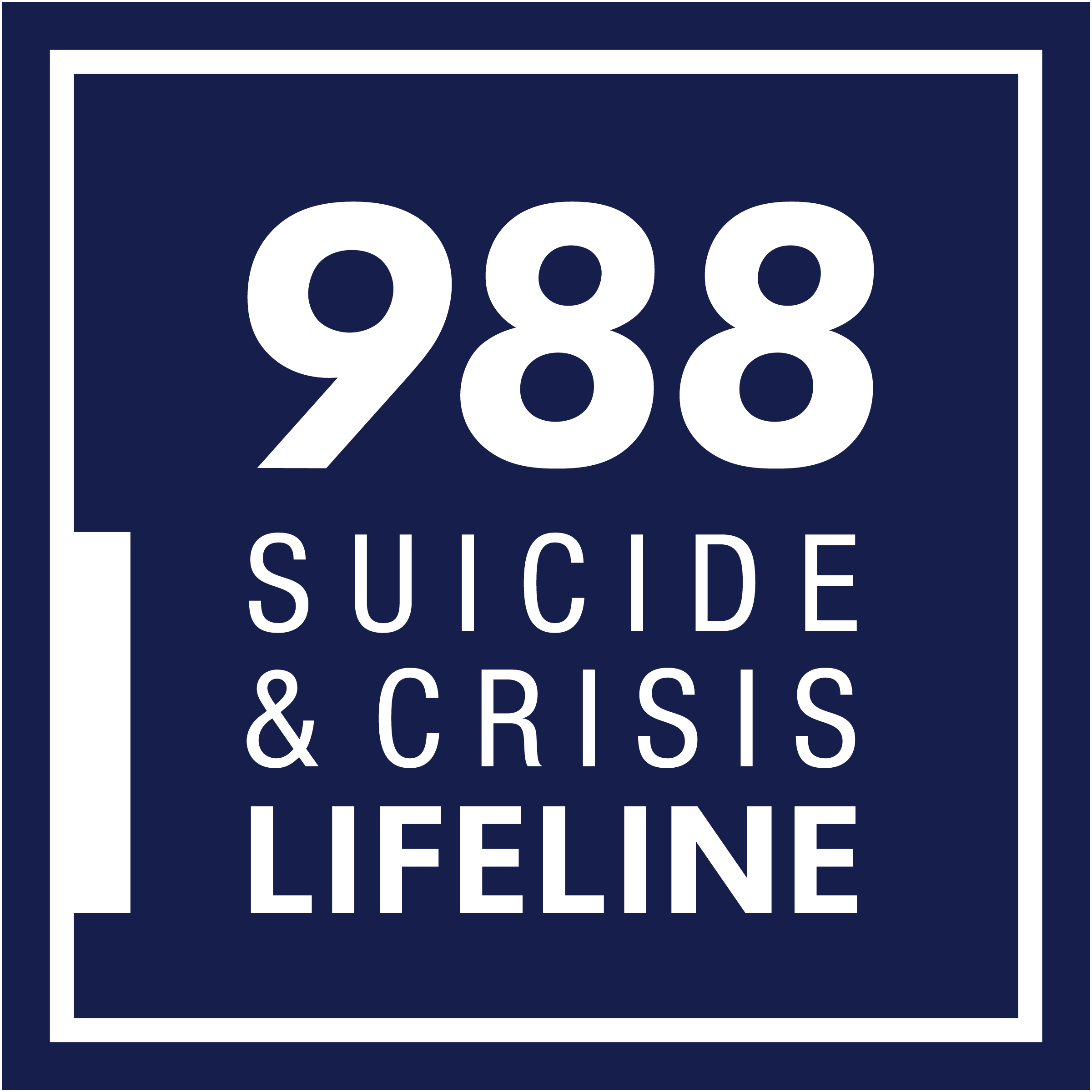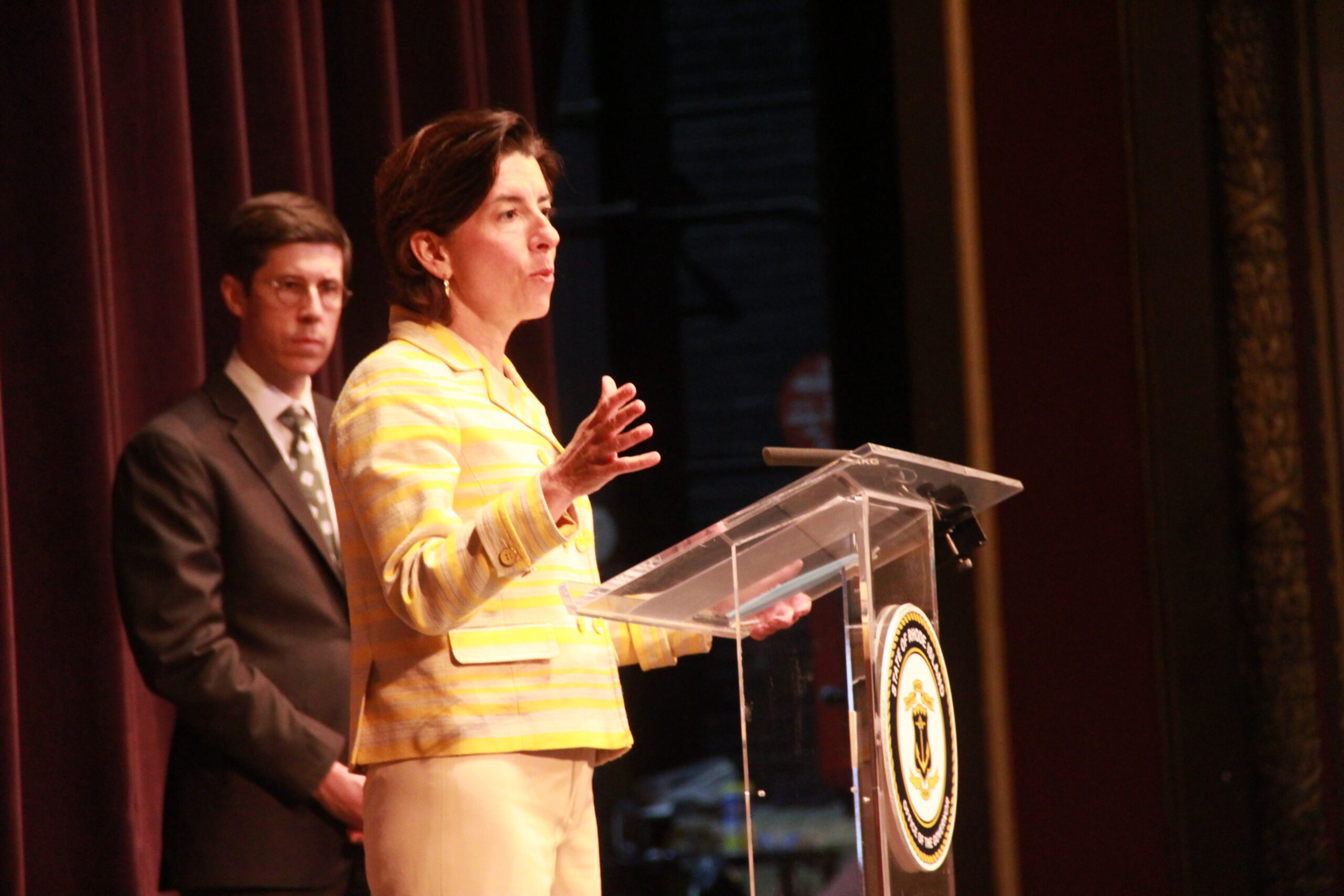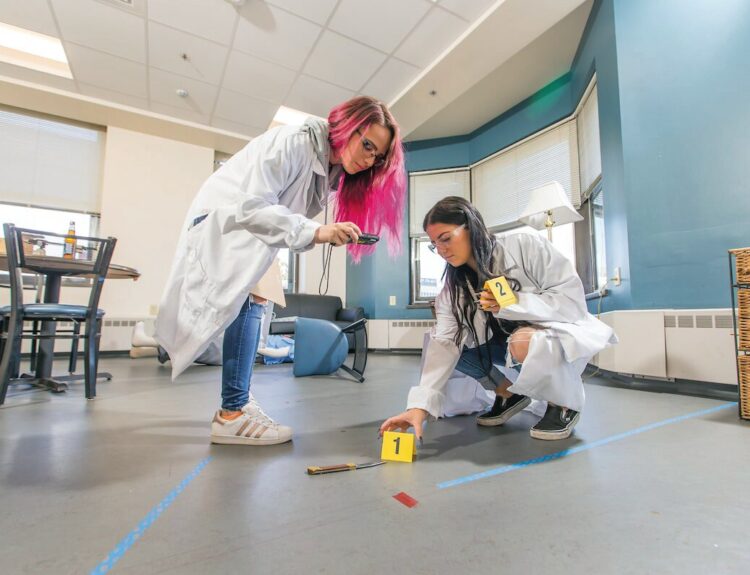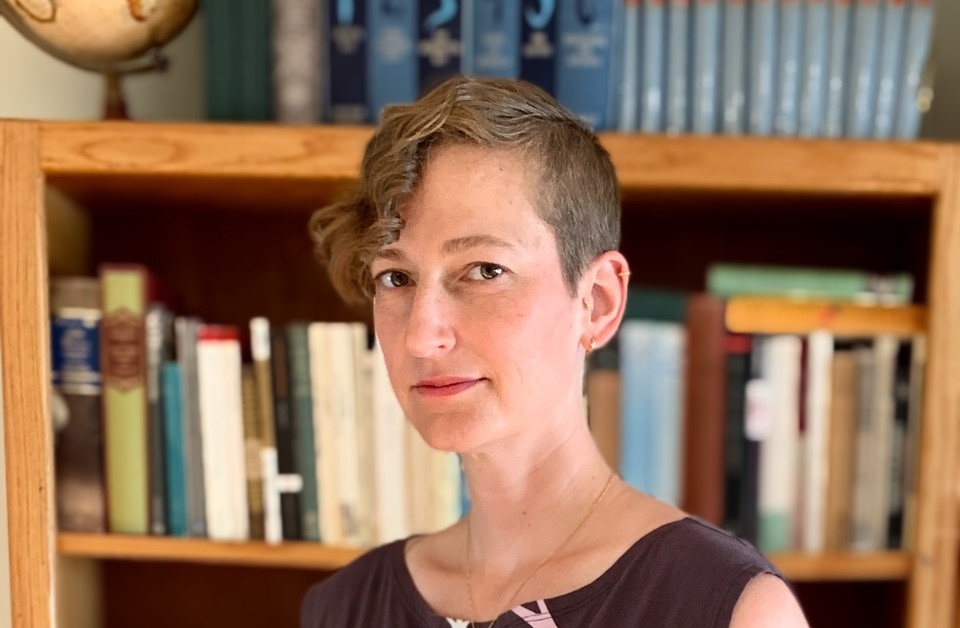‘There is hope’
In 2020, Rhode Island was ranked 48th out of 51 states for rate of suicide, according to preventsuicideri.org, a statewide organization sponsored by the Rhode Island Department of Health and implemented by JSI Research & Training Institute Inc.
The number of reported suicide deaths in Rhode Island has varied over the last decade. While numbers from 2021-2023 have yet to be reported, the total number of deaths in 2020 was at 91, down 28 from the year prior. According to the data, more females than males die of suicide in the state each year.
The age range with the most deaths by suicide has changed over the past decade. In 2010, 33% of people who died by suicide in Rhode Island were under the age of 25. In a census taken between 2016 and 2020, the highest age group was people aged 55-64.
But as preventsuicideri.org states on its website: “Everywhere you look in Rhode Island, there is hope. ‘Hope’ is our one-word state motto. Hope is on our state flag. Hope Street runs through our capital city. And dotting our state are Hope Valley, Hope Village, Mount Hope—the list goes on. So, it should come as no surprise that if there is one thing we want you to know when it comes to suicide prevention in Rhode Island, it’s that there is hope.”
Hope can be found in the emergency hotline number 988, launched in July 2022. This is a national suicide and crisis lifeline, according to Jo-el Tillinghast, a crisis line phone screener at Community Care Alliance, CCA.
The hotline offers “24/7 call, text and chat access to trained crisis counselors who can help people experiencing suicidal, substance use, and/or mental health crisis, or any other kind of emotional distress,” according to a flier provided by CCA, which was instrumental in creating BH Link, a behavioral health center in East Providence.
Rhode Islanders can also call 988 if they’re concerned about a friend or family member.
The call center for 988 in Rhode Island is located on site at BH Link, according to Tillinghast.
“BH Link has been answering the Suicide & Crisis Lifeline since well before 988 launched,” Tillinghast said. “So they’ve always had moderators such as internet and computer services set up since the opening of BH Link back in 2018.”
According to the flier, the people who answer 988 calls are trained crisis counselors at BH Link. BH Link is the state’s 24/7 crisis center for mental health and substance disorder issues.
The call center has the highest call answer rate in the country at this time, Tillinghast said.
When someone calls 988, there is a series of protocols that each moderator walks them through, which can be personalized to each caller, Tillinghast said.
“They are assessed for safety and are asked a series of questions to determine next steps in the process,” she said. “They are always allowed to talk freely and given encouragement and consideration based on their individual needs.”
988 also has accommodations for citizens that speak different languages. According to the flier, they offer crisis center calling services in English and Spanish, and they use Language Line Solutions, a translation service, to translate their services into 250 additional languages. However, the text and chat features of 988 are currently only available in English.
While there is no way to accurately see how many people use the 988 crisis line in Rhode Island, Tillinghast said that she believes it is used frequently. She emphasized that one does not need to be actively suicidal in order to utilize this resource, and the hotline can be used for multiple purposes.
“If you just need someone to talk to, if you or someone else needs resources for others such as friends and family members in need, you can call 988,” Tillinghast said.
Community Care Alliance and BH Link are working to spread awareness for 988 and the services that it offers. Tillinghast said that the impact that it makes will continue to grow as outreach and awareness efforts continue.
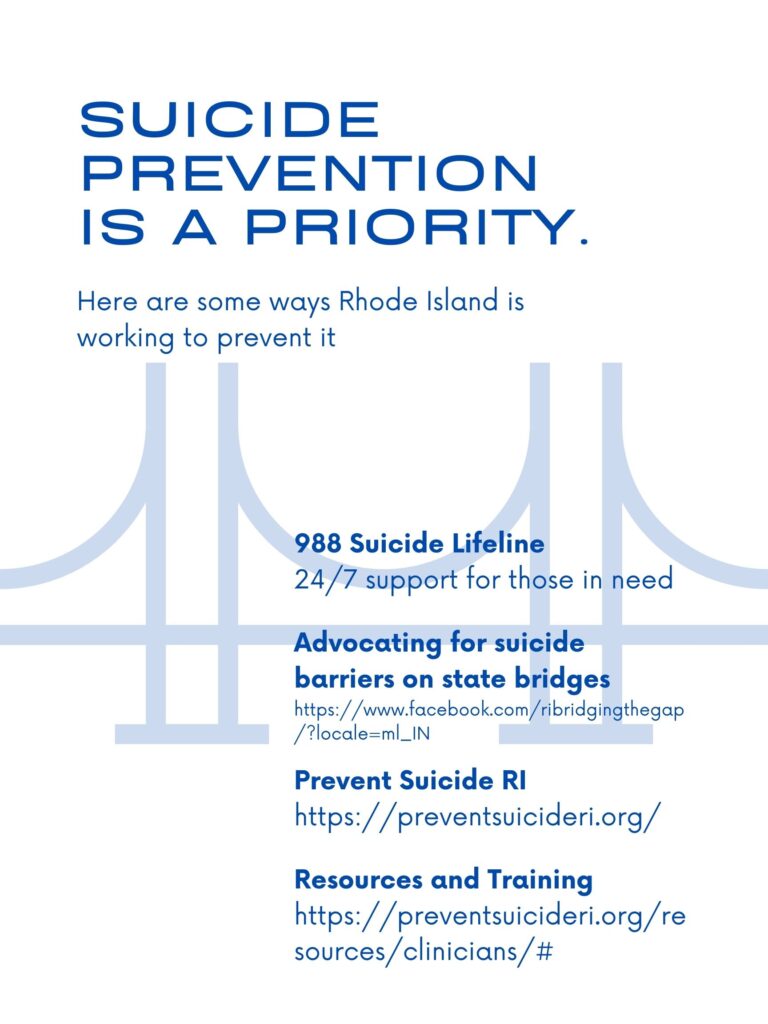
While BH Link and Community Care Alliance work to prevent suicide in Rhode Island through the phone number 988, other efforts to prevent suicide in Rhode Island include the fight to construct suicide barriers on Rhode Island bridges.
From December 1999 to November 2018, there were a total of 92 suicide/attempted suicide incidents on Rhode Island bridges, according to a report by the USA Today Network. Of the four tallest bridges in Rhode Island — Jamestown, Newport Pell, Mount Hope and Sakonnet — the Pell bridge saw the most attempts in this time, with 51 reported incidents.
State Rep. Joseph J. Solomon, Jr. has proposed a bill to fund the construction of barriers on bridges in order to, hopefully, prevent people from attempting suicide by jumping from the bridges.
This idea came to Solomon’s mind a couple of years ago, after he lost a friend of his to one of the bridges.
“That brought to my attention the whole situation going on with the bridges and that something needed to be done,” Solomon said.
Solomon said that he was surprised that there were no barriers already on the bridges to prevent something like this from happening. He felt that it was “important to put barriers up by the time necessary to get people the treatment that they need.”
Melissa Cotta, the founder of RI Bridging the Gap, an organization dedicated to advocating for the installation of these protective barriers, told Ocean State Stories in a question and answer section that barriers on the bridges are a proven suicide deterrent.
She gave a glimpse into the mind of someone in suicidal crisis.
“People in suicidal crisis have tunnel vision and believe ending their life is the only way out of their pain,” she said. “Even though suicidal crisis is a temporary state of mind, it can come on quickly, and the time between deciding to end one’s life and taking action is often very short.”
While the bill to physically build the barriers has still not been passed, Solomon said that they have been able to secure funding for engineering studies to be done on the bridges.
“Right now, the Rhode Island Bridge and Turnpike Authority is in process [of research],” Solomon said. “They already have a contractor who’s studying barriers as to what type of barriers you can put on there because obviously, with weight limits and the winds you have to be really cognizant of engineering design.”
Florida was able to construct suicide barriers for their Sunshine Skyway Bridge located in St. Petersburg for around $3-5 million, according to Solomon. This design and process is similar to the ones that he hopes to install on Rhode Island bridges.
“It’s a very simple design,” Solomon said. “All it is is like netting along the side of the bridge so that someone can’t go over the side. Something like that is all I believe that we need. I don’t think we need to be fancy or anything, and aesthetically, it doesn’t disrupt anything.”
Even one of the nation’s largest and most famous bridges, the Golden Gate Bridge in San Francisco, California has installed suicide barriers on the bridge in the form of stainless-steel nets, according to an article in the New York Times. The nets are about 20 feet down and stretch about 20 feet out. According to The New York Times, about 2,000 people are known to have died by jumping off of the Golden Gate, and people have been fighting for decades to get some sort of barrier installed.
There are skeptics out there who say that installing these barriers do not actually help to save lives, Cotta said. These people believe that people who are in suicidal crisis will simply find another way to take their own life if deterred by the barriers.
Cotta said that this common misconception is not backed up by data, and once someone is deterred, it is very rare that they later die by suicide.
Time is of the essence in an emergency situation, Solomon said, and unfortunately sometimes it’s too late before police are able to make it to the top of the bridge if someone were contemplating ending their life.
“I know there’s a police station not far away,” Solomon said. “But just the timeframe for when, you know, if someone were to stop on top of the bridge, it’s still gonna take too much time for someone to get there. This [the barriers] just buys time necessary to get the assistance that people need.”
Solomon emphasized that when someone chooses to end their life, there is a “ripple effect” of people that are affected beyond just that person. Family, friends and even first responders that show up at the scene are permanently impacted by the loss of their loved ones to suicide, and through this initiative, Solomon is able to connect with many Rhode Islanders who have had these experiences.
Through efforts such as the 988 hotline and the (hopeful) installation of suicide barriers on bridges, Rhode Island is in a consistent effort to prevent suicides in the state. For more information on suicide prevention efforts, visit preventsuicideri.org.
Anyone in immediate danger should call 911.
Call 988 if you are having thoughts of suicide or are in crisis. 988 is free, available 24/7, and confidential.
Other resources:
● BHLink: For confidential support and to get connected to care, call (401) 414-LINK (5465) or visit the BHLink 24-hour/7-day triage center at 975 Waterman Ave., East Providence. Website: bhlink.org
● The Samaritans of Rhode Island: (401) 272-4044 or (800) 365-4044. Website: samaritansri.org
● The Crisis Text Line: Text HOME to 741741 “from anywhere in the USA, anytime, about any type of crisis.”
● Butler Hospital Behavioral Health Services Call Center: Available 24/7 “to guide individuals seeking advice for themselves or others regarding suicide prevention.” (844) 401-0111

